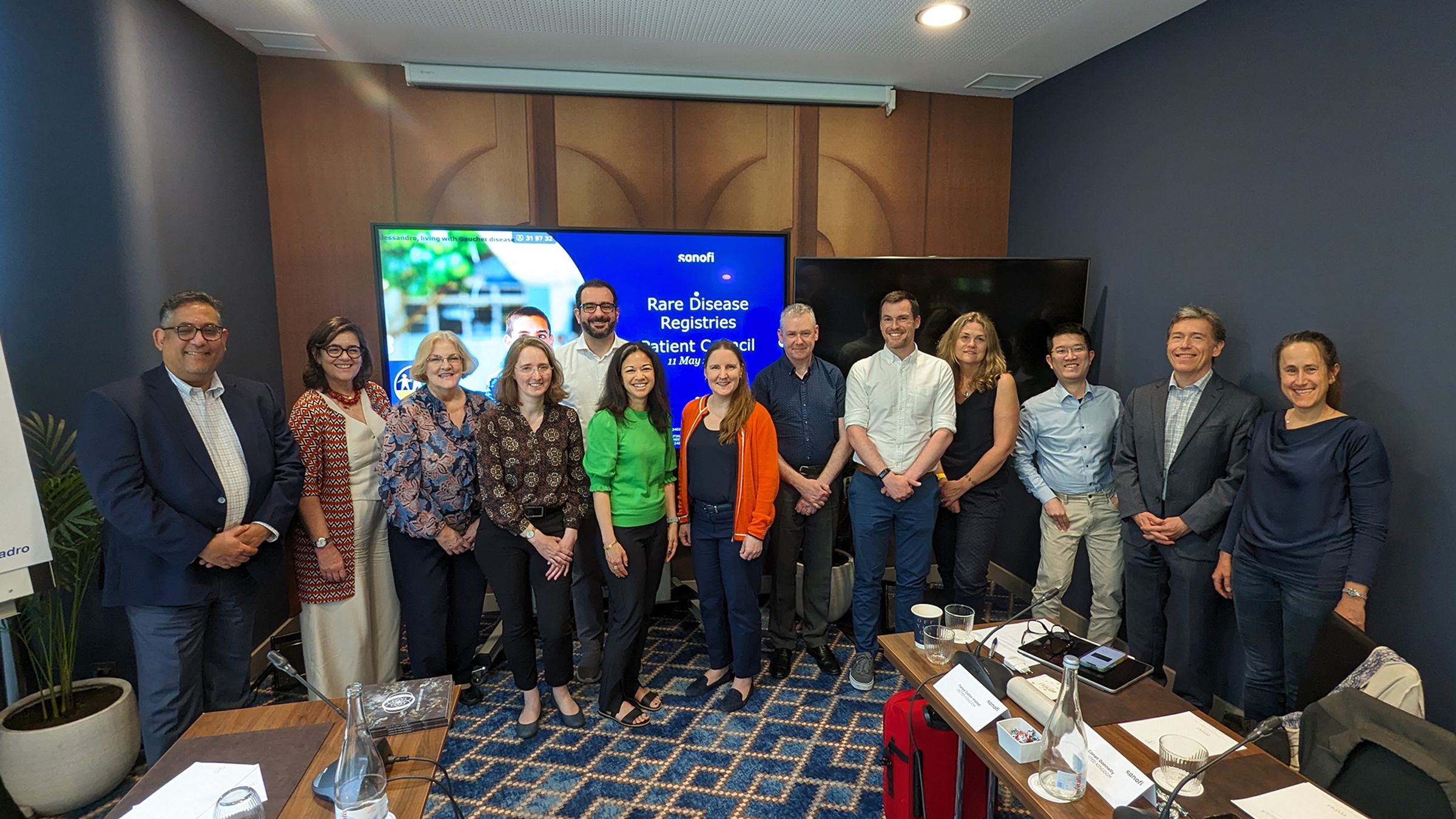Real-World Evidence Requires Real-World Patients

Patient communities are not homogenous – diseases can affect people differently. That’s why collecting real-world data (RWD) from patient registries is critical to produce real-world evidence (RWE) for disease understanding. RWE is particularly important in rare disease, where patient populations are small, and diseases can have a wide range of clinical symptoms. While registries can support many different stakeholders across the rare disease ecosystem, direct patient input into how they are designed and maintained and how their data are used is key.
Sanofi’s Rare Disease Registries and the Rare Disease Registries Patient Council serve as an example of how a partnership between patient communities and registries can maximize their value for all stakeholders. These stakeholders include patients, providers, researchers, regulators, health technology assessors, and payors. Sanofi's Rare Disease Registries, however, were not built overnight and Sanofi continues to assess and evaluate how data is collected and applied, while adhering to strict privacy considerations in line with local legal and regulatory requirements.
The Rare Disease Registries
It started 30 years ago, when Sanofi’s Rare Disease Registries (RDRs) were established to collect data on rare lysosomal storage disorders. Today, our RDRs include data on Fabry, Gaucher, Mucopolysaccharidosis type I, and Pompe diseases. Patients can enroll regardless of whether or not they are being treated. Given the heterogeneity of lysosomal storage disorders, and the smaller patient populations dispersed across the world, collection of real-world data has been incredibly valuable for gaining insights into the natural history, disease manifestations, and clinical outcomes of these conditions. Today, more than 18,000 patients with one of those four lysosomal storage disorders have enrolled at over 800 sites in 64 countries to be a part of the RDRs, resulting in more than 100 peer-reviewed articles published using RDR data to advance learning.
An Identified Gap
While patients are essential to the collection of real-world data and have shown great support for disease registries through their participation, historically they were not involved in the up-front data collection process1. Meaning, patient input was not formally incorporated into the design, operation, and outputs of disease state registries. But in 2019, Sanofi set out to change that with the creation of the Registries Patient Council, a committee that enables patient advocacy groups (PAGs) to contribute in a meaningful way to the design and execution of the RDRs.
How does the Registries Patient Council work?
The Rare Disease Registries Patient Council plays a key role in maximizing the value of the real-world patient data collected. The council is comprised of both regional and global patient advocacy groups that partner with Sanofi to engage and provide input on how registry data is collected and utilized. The council plays a direct role in registry decision-making, with co-creation of outputs and solutions for the community. Results of this effort were recently published in the Orphanet Journal of Rare Diseases in an article co-authored by the Rare Disease Registries Patient Council. The paper demonstrates how this integrated patient engagement model in collaboration with industry has enhanced the value of the RDRs across stakeholders.
Results of the Collaboration
In the 5 years since the inaugural RDR Patient Council meeting, we’ve launched initiatives like plain language summaries (PLSPs) of registry publications, available in six different languages. We are also working to develop digital innovations, such as the ability for patients to directly enter patient-reported outcomes (PROs) into the RDRs and access individual and global data reports via their own patient account. PAGs now also attend both international and regional RDR advisory board meetings.
What’s Next?
With input from the Patient Council, we continue to improve upon our operations. We will be continuing to roll out eConsents, where allowable under local regulations, which will help facilitate enrollment into the RDRs, streamline administrative processing, and reduce the burden on patients and their caregivers. We’re also developing E-Learning videos and technical support to facilitate use of the process, which is intended to help break down barriers to patient understanding and participation in the RDRs.
Other notable updates include the Global Registry Reports and Patient Clinical Summaries, accessible via patient account. These will provide participants with visual summaries of both aggregate and personalized clinical data. The Patient Council supported the development of these reports to empower patients to feel part of the global registry community while also functioning as an educational resource for patients and their caregivers. With ongoing support from the Patient Council, Sanofi’s RDRs will continue to serve as a valuable resource and tool in the pursuit of better care for rare.
In addition to the Orphanet Journal of Rare Diseases publication mentioned above, we also invite you to watch a compilation of what some of the patient advocacy group members of the Patient Council had to say about this innovative and collaborative approach to strengthening the value of real-world data.

The Rare Disease Registries Patient Council is a group of global and local patient advocacy leaders established to engage the patient community as important stakeholders in the use of Registry data to generate real-world evidence and to add patients’ perspectives on matters including how the data are disseminated into the wider community.
References
1Mistry, P.K., Kishnani, P., Wanner, C. et al. (2022) Rare lysosomal disease registries: lessons learned over three decades of real-world evidence. Orphanet J Rare Dis 17, 362 DOI : https://doi.org/10.1186/s13023-022-02517-0